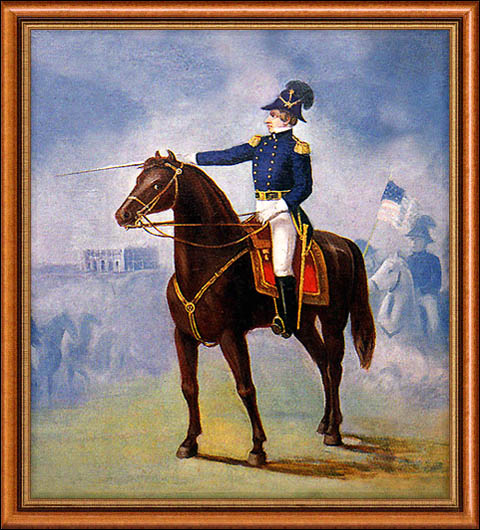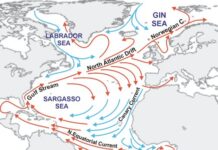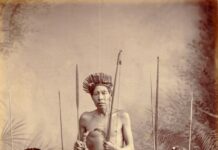
Heritage is defined as:
a) Something that is handed down from the past, as a tradition:
b) Something that comes or belongs to one by reason of birth; an inherited lot or portion:
c) Something reserved for one:
Lineage is defined as:
a) direct descent from an ancestor
b) ancestry; family; stock
c) descendants from a common ancestor
Below is some very interesting information about heritage and lineage. Just as Lehi may have several heritages, Joseph Smith in a like manner has several heritages. There is also some interesting information about Joseph Smith’s DNA and showing he is of Irish descent.
LEHI’S MANY HERITAGES by Hugh Nibley.
“The caravans of Egypt and Israel pass each other, guided through the sands by those men of the desert (Arabs) who were the immemorial go-between of the two civilizations.
- ARAB: Arab designates a way of life, and was applied by the Jews to their own relatives who remained behind in the wilderness. , Manasseh lived furthest out of Jerusalem and had contact with Arabs the most.
- ISRAELI: Of Manasseh through Joseph and the 12 tribes of Israel.
- EGYPTIAN: Language of Lehi consists of learning of Jews and language of Egyptians: Heritage, culture. Ammon was Manasseh’s nearest neighbor and is an Egyptian name.
- HEBREW: Lehi means Jaw Bone in Hebrew. From Eber, Jewish because they live near and around Jerusalem. Learning of the Jews.
- CHRISTIAN: Through Christ, and lived the law of Moses
Arabic Names: LAMAN, LEMUEL
Egyptian Names: NEPHI, SAM
Israeli Names: JACOB, JOSEPH”
Lehi in the Desert by Hugh Nibley Chapter 2 (numbering and subheadings added)
Joseph Smith was a pure Ephraimite

“It is the house of Israel we are after, and we care not whether they come from the east, the west, the north, or the south; from China, Russia, England, California, North or South America, or some other locality. … The Book of Mormon came to Ephraim, for Joseph Smith was a pure Ephraimite, and the Book of Mormon was revealed to him.” (Brigham Young Journal of Discourses 2:268–69.)
“Is it possible for the same person to be an Israelite by birth and yet be considered a Gentile?”
Although President Young identified Joseph Smith as a “pure Ephraimite” in the above quotation, so far as the Prophet’s family or blood lines were concerned, Brigham Young and others have recognized that (1) Joseph Smith was from a Gentile nation and (2) some of Joseph Smith’s progenitors may have come from bloodlines other than that of Ephraim. (See Journal of Discourses, 2:268.)
President Joseph Fielding Smith also provided insight on how the term Gentile could apply to Joseph Smith even though he was a descendant of Jacob (Israel) through Joseph, the father of Ephraim:
“In this Dispensation of the Fulness of Times, the gospel came first to the Gentiles and then is to go to the Jews. However, the Gentiles who receive the gospel are, in the greater part, Gentiles who have the blood of Israel in their veins. There is a very significant statement in the words of Moroni as recorded on the title page of the Book of Mormon that it was ” … ‘To come forth … by way of the Gentile. …’
“How did the Book of Mormon come forth? By the hand of Joseph Smith. Yet we read in the Book of Mormon [see 2 Ne. 3:7–15] that Joseph Smith is the descendant of Joseph who was sold into Egypt by his brethren, nevertheless he came by ‘way of the Gentile,’ according to Moroni’s prediction.” (Answers to Gospel Questions, 4:39.)
Thus, Joseph Smith was of the house of Israel so far as his family or blood lines were concerned, but he came from a Gentile nation and thus might also be considered a Gentile in the political or geographical sense.
Lehi= Manasseh; Ishmael= Ephraim; Mulek= Judah;

“Whoever has read the Book of Mormon carefully will have learned that the remnants of the house of Joseph dwelt upon the American continent; and that Lehi learned by searching the records of his fathers that were written upon the plates of brass, that he was of the lineage of Manasseh. The Prophet Joseph informed us that the record of Lehi, was contained on the 116 pages that were first translated and subsequently stolen, and of which an abridgement is given us in the first Book of Nephi, which is the record of Nephi individually, he himself being of the lineage of Manasseh; but that Ishmael was of the lineage of Ephraim, and that his sons married into Lehi’s family, and Lehi’s sons married Ishmael’s daughters, thus fulfilling the words of Jacob upon Ephraim and Manasseh in the 48th chapter of Genesis, which says: “And let my name be named on them, and the name of my fathers Abraham and Isaac; and let them grow into a multitude in the midst of the land.” Thus these descendants of Manasseh and Ephraim grew together upon this American continent, with a sprinkling from the house of Judah, from Mulek descended, who left Jerusalem eleven years after Lehi, and founded the colony afterwards known as Zarahemla and found by Mosiah—thus making a combination, an intermixture of Ephraim and Manasseh with the remnants of Judah; and for aught we know, the remnants of some other tribes that might have accompanied Mulek.” (Erastus Snow, JD 23:184) Also see page 9 of the Annotated Book of Mormon by David Hocking and Rod Meldrum Purchase Here
“Speaking about Lehi’s people, “Joseph wrote, “They were principally Israelites, of the descendants of Joseph.” It is possible that Joseph Smith was referring to Zoram after all, clarifying he was not a Jew. He may have been referring to those who accompanied the Mulekites (presumably Phoenicians). But it is also possible that he was referring to others who accompanied Lehi… To summarize: I think Lehi brought servants and landed in a mostly uninhabited area in Florida, among a small population of hunter/gatherers who lacked a well-organized society.” Jonathan Neville Moroni’s America page 84-86
DNA shows Joseph Smith was Irish
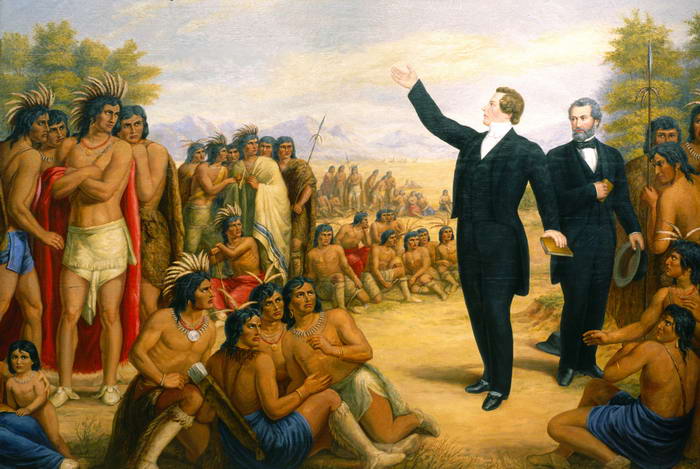 SANDY, Utah — DNA research into Joseph Smith Jr.’s genealogy has turned up a surprise, according to Ugo Perego, director of operations at the Sorenson Molecular Genealogy Foundation: A rare DNA marker shows that the assumption Smith’s family line came from England is probably wrong.
SANDY, Utah — DNA research into Joseph Smith Jr.’s genealogy has turned up a surprise, according to Ugo Perego, director of operations at the Sorenson Molecular Genealogy Foundation: A rare DNA marker shows that the assumption Smith’s family line came from England is probably wrong.
The Smiths were Irish.
Perego was speaking at the 10th annual Mormon Apologetics Conference presented by the Foundation for Apologetic Information & Research this week at the South Towne Exposition Center in Sandy. He recounted the investigation into Joseph Smith’s DNA and some of the results.
The primary means used to investigate Joseph Smith’s DNA was the Y chromosome — a part of DNA that is only passed from father to son and has few mutations.
Elaine Nichols, a specialist in Joseph Smith’s genealogy, according to Perego wrote in 1991 that Smith’s line can only be followed with confidence back to Robert Smith, possibly born in 1626. Robert Smith showed up in 1638 in Boston, Mass., as an indentured servant to another man. No parents known. No siblings known.
“At that time we thought: ‘Wouldn’t it be cool if we can reconstruct the Joseph Smith genetic signature, the paternal-line signature … and then, somehow,… collect samples from Smiths in England, particularly in the area where we think (Robert Smith) came from, see if we find similar genetic signatures there, and perhaps bridge the gap between the Utah or Mormon Smiths and those in England — and find a way to bridge this genealogical gap using DNA,'” Perego said.
By using DNA samples from several known Joseph Smith Jr. and his father’s descendants, an accurate example of his Y chromosome DNA profile was identified. There was no need to test his blood or bones or hair or anything.
“If I had Joseph Smith standing by me and be able to (take a sample of his cells) and get some DNA from him, I wouldn’t know any additional information than what I already know based on the (samples) of his descendants. That is how accurate this information is,” Perego said.
Having this accurate DNA profile also enabled testing of his alleged descendants through polygamous or plural wives.
Perego showed part of a list of alleged children of Joseph Smith through other wives. The DNA of a number of the alleged children was identified and compared:
Moroni Pratt was not his child, contrary to what Fawn Brodie speculated in her critical biography of Joseph Smith, “No Man Knows My History.”
Zebulon Jacobs was not his child.
Oliver Norman Buell was claimed by Brodie to be a son of Joseph Smith. She had compared his photograph with Joseph Smith III. “Even the hairstyle was the same,” Perego said, eliciting some laughter from the crowd. But notwithstanding the physical similarities, Buell was not Smith’s child.
Mosiah L. Hancock was not his child either.
Using other DNA tests, Perego also hopes to determine whether Josephine Rosetta Lyon is a daughter of Joseph Smith. So far he has collected 120 DNA samples from her descendants. He says they should know in the “next year or so.” (See 2016 results here. “Joseph Smith apparently was not Josephine Lyon’s father, Mormon History Association speaker says.”)
“My testimony of Joseph Smith has absolutely nothing to do with to what extent he practiced polygamy,” Perego said. “But there is an interesting situation in which there are literally thousands of people descended of these individuals that are wondering, based on what has been written, whether or not they are descendants of Joseph Smith, and so here you have a chance to tell these people how things are.”
Whether Joseph fathered some of the other children on the list may never be known, because some of them died too young to have any children themselves. “I’m not really in the business of going around and digging up graves and testing,” Perego said.
Perego then returned to his search for Joseph Smith’s ancestor in England. Because Joseph Smith’s last certain ancestor on the Smith paternal line, Robert Smith, was indentured to a man who had property in Kirton, Lincolnshire, England, the assumption was made that Robert Smith was also from Kirton.
Another Robert Smith was found there who had a son named Robert at about the correct time. This new Robert Smith was assumed to be the father of the younger indentured servant Robert Smith who came to America — even though the connection was weak. Smith is a common name, of course, and Robert was the most popular first name at the time.
This is where the trail goes completely cold using standard genealogical methods. Perego’s goal was to see if any traces of the Smith family DNA were still in the area. If Robert Smith came from that area, some matching DNA should remain in living Smiths. This would add some support to the genealogical record.
Perego wrote letters to 1,100 Smiths in the Lincolnshire area asking for DNA samples. Thirty-three people responded, but testing showed zero matches with Joseph Smith’s DNA.
The Joseph Smith DNA was unusual for Smiths — even among Smiths in the United States.
 Without any success in the target area, Perego cast a wider net — using both Joseph Smith’s specific DNA Y chromosome profile and a “haplogroup” to look for matches. A haplogroup is a grouping of Y chromosome profiles that share similar characteristics. These haplogroups are usually very geographically specific.
Without any success in the target area, Perego cast a wider net — using both Joseph Smith’s specific DNA Y chromosome profile and a “haplogroup” to look for matches. A haplogroup is a grouping of Y chromosome profiles that share similar characteristics. These haplogroups are usually very geographically specific.
First, Perego put the Joseph Smith DNA profile into the Sorenson Molecular Genealogy Foundation database of 23,403 Y chromosome DNA samples. He was looking for matches from about the time when Robert Smith came to America. He found close matches, many of which were Irish.
From there, Perego identified a part of Joseph Smith’s DNA that had a very rare marker called M222. With this “higher resolution” he found that the same marker was found in Northwest Ireland — with a little bit in Lowland Scotland.
Finally, Perego looked at a study published in 2006 that dealt with this same area of Ireland. A Y chromosome profile had been found that was attributed to the many descendants of “Niall of the Nine Hostages,” a fifth-century Irish warlord who was the ancestor of the kings of Ireland up to the 10th century. Perego compared that Y chromosome with Joseph Smith’s profile and found they matched very closely. This was another indication that Smith’s ancestors along his paternal line were not just Irish, but probably related to Irish royalty.
“Perhaps this indentured servant, this 12-year-old boy, was an Irish descendent, perhaps only one or two generations before they were living in Ireland … and moved to England,” Perego said. “Irish people were not viewed too well in England, perhaps there was a surname change. Perhaps Smith was not a Smith, was something else at some point.”
Perego speculated the Irish Smiths were likely not in England for many generations, otherwise he would have found a lot of genetic matches from the samples he collected from the English Smiths who live now in that area.
“I hope that that doesn’t change anybody’s testimony here,” he joked. “I feel OK about the Irish people.” E-mail: [email protected]
DNA tests rule out 2 as Smith descendants – Scientific advances prove no genetic link
By Carrie A. Moore, Deseret News Published: Saturday, Nov. 10 2007
LDS Church founder Joseph Smith married as many as 30 women.
Summary
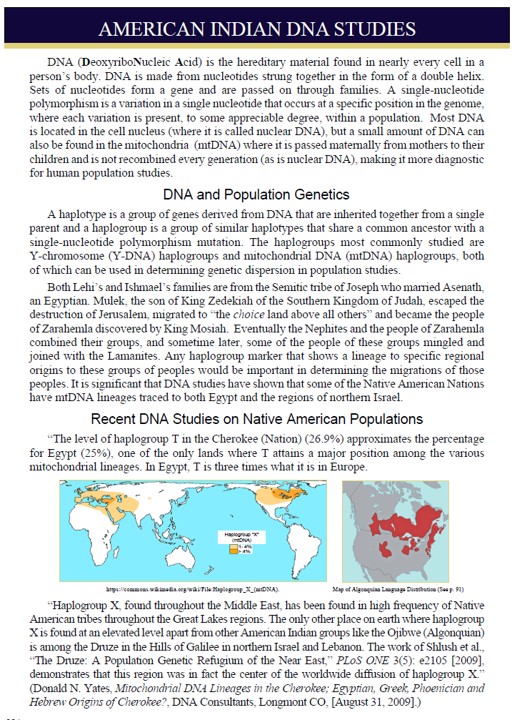
After more than a century of speculation about whether LDS Church founder Joseph Smith had children with any of his plural wives, a local geneticist said he recently has crossed two such purported descendants off the list of potential candidates.
After more than a century of speculation about whether LDS Church founder Joseph Smith had children with any of his plural wives, a local geneticist said he recently has crossed two such purported descendants off the list of potential candidates.
Ugo Perego, director of operations at the Sorenson Molecular Genealogy Foundation, told the Deseret Morning News that technological advances in DNA testing during the past couple of years have helped prove with “99.9 percent certainty” that two early Latter-day Saints thought by some to be Smith’s children are not his descendants. They are:
- Mosiah Hancock, son of Clarissa Reed Hancock, who was married to Levi Hancock.
- Oliver Buell, son of Prescindia Huntington Buell, who was married to Norman Buell.
Perego said that brings to five the number of people that some believed were Smith descendants whose paternal DNA does not match up with his. To date, at least seven other early Latter-day Saints have been identified in various historical documents or in later writings as potential Smith offspring, he said.
In 2005, Perego said DNA testing also ruled out three other alleged male descendants — Moroni Llewellyn Pratt (son of Mary Ann Frost Pratt, married to Parley P. Pratt), Zebulon Jacobs (son of Zina Diantha Huntington Jacobs Smith, married to Henry Bailey Jacobs) and Orrison Smith (son of Fanny Alger).
Some candidates are surrounded by what he called “strong historical evidences like journal entries,” while other alleged descendants have little historical basis to be related, other than “speculation based on conclusions that sometimes may have been too rushed,” Perego said.
In Hancock’s case, “historically, there is nothing about him. In fact, another son of Levi Hancock is more in question, named John Reed Hancock.” Mid-20th century historian and author Fawn Brodie, in her book “No Man Knows My History,” had “quite a lot about John Reed Hancock,” he said.
Brodie also believed Buell was Smith’s child, born during the early church’s days in Far West, Mo., he said. “She goes quite far to explain why she thought this was the case. The time was perfect because (Prescindia’s) husband was gone from the church, and there was a plural marriage that took place while he was gone.”
Brodie also offered as evidence a photo of Buell resembling two of Joseph and Emma Smith’s sons, writing that his “physiognomy … seems to weigh the balance overwhelmingly on the side of Joseph’s paternity.”
Historians say Smith was married to as many as 30 women before he was killed by a mob in June 1844.
Perego also has gathered DNA samples on about 120 descendants of Josephine Rosetta Lyon, daughter of Sylvia Sessions Lyon, who was one of Smith’s wives. But Y chromosome evidence, used to determine paternal relationships from father to son, is not present for Lyon because she is female. The effort to determine Lyon’s parentage is ongoing, he said.
His most recent findings were presented as a paper at the annual John Whitmer Historical Association conference in Kirtland, Ohio, in late September. The group’s officers since have asked Perego to put his presentation into an article format suitable for publication in their next annual journal.
The list of approximately 12 people alleged to have been Smith’s children “may grow over time,” Perego said, noting historical documents continue to surface. “I’m not saying the list I have is definitive or complete at all. But out of those we have data for, there is no evidence from DNA at this point that Joseph Smith had any children from women other than Emma Smith.
“In the future, if DNA data will be able to be collected and tested, we might know otherwise. But right now, we’re able to eliminate five children from that list. There may be some cases we might never be able to test at all.”
While Y chromosome DNA is passed from father to son and is most accurate in identifying living people, mitochondrial DNA is passed from mother to daughter and is more often used in paleontology and archaeology, Perego said. As a result, there are distinct limitations on the testing that can be done to date because such testing on a living — and cooperative — male descendant requires an unbroken male line.
Perego has mapped Smith’s DNA by retrieving samples from living descendants of two sons he had with Emma Smith — Joseph Smith III and Alexander Hale Smith. “Their Y chromosomes were identical, so we know for 100 percent sure what Joseph Smith’s Y chromosome looked like. We can now use that standard to verify any other alleged sons,” which he did with those who have been eliminated as possible descendants.

“For 160 years people have been writing in books or speculating that these people could have been Joseph Smith’s children. When people write something in a book, many people refer to that almost as a fact. Brodie went on and on about Buell, talking about the timing and the picture — everything seems to indicate Buell was Joseph Smith’s son. But the DNA says otherwise.”
Perego said he was not only able to eliminate Smith as their father, but also was able to confirm that the men who were married to Hancock’s and Buell’s mothers were actually their biological fathers.
As he finds living descendants of people in question, Perego said he will be happy to continue to test them. “I think this will always be a work in progress. Hopefully, someday we’ll be able to test some of the girls as well, when genetic testing is developed to accurately conclude if some of these girls were or were not his descendants.”
Plural wife Sylvia Sessions Lyon left a deathbed affidavit for her daughter, Josephine, telling her that her father was Joseph Smith. In terms of circumstantial evidence, “that is probably the strongest case out there, but it involves a daughter. I’ve collected maybe 120 samples from descendants of Josephine, but as of today, there is not an accurate method” to prove parentage. (See 2016 results here. “Joseph Smith apparently was not Josephine Lyon’s father, Mormon History Association speaker says.”)
Perego’s work is an independent project that Sorenson has allowed him to work on, rather than something the foundation does full-time, he said. His motive, he said, is truth, not glory.
“As a scientist, I like to look for truth. If there is a book that says this person was Joseph’s son, and I have evidence that’s not right, it’s important for me to offer an alternative explanation from science that people can refer to. New authors in the future can then take that new genetic evidence into consideration.
“My goal is not at all a crusade to prove or disprove either that Joseph Smith practiced polygamy or that he had children from women other than Emma. I have no agenda to prove or disprove.
“There are legitimate cases of individuals studying family history who have a pedigree chart in front of them that shows” Smith as a third-great-grandfather.
“Because there is some evidence like a book or a rumor in the family, individuals don’t know who to put on their pedigree chart. We’re talking about real people who want to know who they are descended from.
“Most have told me they don’t really care if they come from Joseph Smith or from someone else. They just want to know which one.”
For information on DNA testing for family history research, see Sorenson’s Web site at www.SMGF.org.
E-mail: [email protected]

